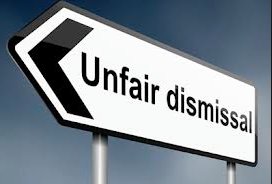Disciplinary Procedures:
‘Misconduct’ in the workplace refers to unacceptable or improper behavior. This includes failing to reach performance goals and business expectations, persistent lateness or unauthorized absence from work. Misconduct is classed as ‘gross’ when the behavior is more serious, for example, physical violence, insubordination, theft and gross negligence.
An organization’s Code of Conduct should outline important information and guidance on the expected levels of behavior, responsibility and practices within the workplace. This set of rules is a means by which an organization or party can communicate appropriate standards of conduct between colleagues, service users and clients. Furthermore, it sets out ethical and legal requirements.

Recruiting and retaining the right staff for your business can be a difficult task. Having a clear and achievable staff performance plan, outlining goals and expectations is essential. This plan should be effectively communicated and agreed with all your employees. With management support and training, your employees will have the opportunity to be a positive and productive part of your organization.
All businesses over time, will encounter poor performance and misconduct issues.
Making sure discipline is maintained is very important but, how can it be fair and transparent?
The level of discipline required will be depend on the seriousness of the misconduct. Dealing with misconduct, in an appropriate manner and following company procedures, will ensure your workers are treated fairly.
How do you arrive at fair Disciplinary Procedures?
All businesses should have a Disciplinary policy and Code of Conduct in place. As with all policies, this should be available to all employees, clearly defining company expectations. With workplace and regulatory compliance becoming more and more important, ensuring that staff have read and understood your organization’s policies and procedures is fundamental.
A Disciplinary policy should be in line with ACAS guidelines. It must state what type of performance and behavior may lead to disciplinary action and what action your employer might take. It should include what constitutes misconduct, gross misconduct and grounds for dismissal. Additionally, it should specify the name of someone an employee can speak to if they don’t agree with their employer’s disciplinary decision. The policy should state different stages of a disciplinary procedure, rights of your workforce both for representation and to raise an appeal if action is taken.
Employers often spend a large amount of time drafting a fair disciplinary policy, but fail to give the same attention to training their staff to put it into practice.
Managing poor conduct or performance can be a challenging task. Making sure your managers are adequately trained will help your business maintain discipline and provide an acceptable and transparent disciplinary process.

The VinciWorks Disciplinary Procedures eLearning course provides guidance on disciplinary procedures that are required within a workplace to ensure the fair treatment for those whose conduct or job performance does not meet acceptable levels. This course allows your organization to communicate your disciplinary procedures to all employees.
As with all our online courses, this VinciWorks Disciplinary Procedures eLearning course is SCORM Compliant and can be customized to meet your needs. This means that it will cover your specific policy, rather than deal in generalities. Your designated course administrator can edit the text and images within the course using our integrated authoring tool and link to organization-specific documentation, policies and procedures, all at no extra cost.
Click here to request a free trial today








